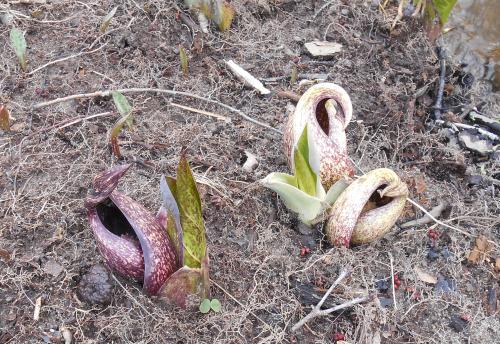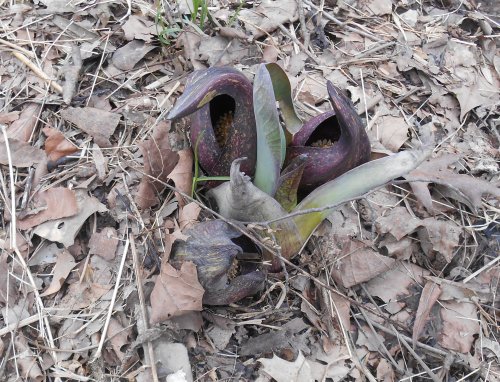#araceae


Seed parent vs seedling! The pink pigmentation is sensitive to environmental factors (heat, cold, light levels), so it can come and go, especially o young plants that stay shaded all day.

Synandrospadix vermitoxicus.





Amorphophallus impressus (or, more likely, the hybrid Amorphophallus lewalleiximpressus).


Amorphophallus konjacxalbus ‘Mary Sizemore’. I was very surprised to see this one bloom, since I just received it in January, and it didn’t seem large enough yet. I presume it’s taking after the albus parent in this regard.
More calla lilies today, which aren’t lilies at all- they’re aroids! Members of the Araceae family are commonly known as aroids or arums and have a spadix inflorescence (a fleshy stem covered in tiny flowers) often accompanied by a spathe (a petal- or leaf-like bract curving around the spadix). In monecious aroids, the female flowers are typically at the bottom of the spadix and the male flowers at the top. A number of different species of aroids are eaten around the world, including Amorphophallus paeoniifolius (elephant foot yam), Colocasia esculenta (kochu, taro, dasheen), Xanthosoma (cocoyam, tannia), Typhonium trilobatum and Monstera deliciosa (Mexican breadfruit). Usually the starchy corm is eaten, though leaves and flowers also have culinary uses.
#Araceae #callalily #aroids #arums #Zantedeschia #botany #botanize #plants #nature #art #science #scientificillustration #botanicalillustration #illustration #plantart #sketch #inksketch #penandink #brushpen #lineart #linedrawing #ethnobotany #edibleplants
https://www.instagram.com/p/BuhZL_3FFaG/?utm_source=ig_tumblr_share&igshid=fo24e0pckabm
Post link


The color in Philodendron bipennifolium is absolutely gorgeous. This teal green highly reflexive is so charming, thanks nature winter is over down here in Brazil and we can have full growth again. Just waiting for the rains, even if la niña promisses lower rainfall this end of year.
The caladium bicolor under it just popped there and serves well to compare the color of the leaves. I’ll repot it as soon as the rains start around here. Also I’m feeling like filling this pot soil with more organic matter and do some magnesium fertilization.


Thaumatophyllum bipinnatifidum young leaves, native around here. It is said that indigenous people used to eat the fruits just like monstera deliciosa. But may take a while to see that one flowering. Specially because it turns to be a huge, massive plant when adult and I’m not sure I can afford that kind of space, but we’ll manage.

Mine still young but as one can see the “trunk” like structure is arealdy forming, a very specific characteristic of the genus. No other philodendron can produce a structure like this, only those species of thaumatophyllum that developed and divided from other philodendron in an early evolution stage.
Now I’ll be waiting for it to develop more leaves and become larger. Later those plants start to look like huge snakes with the winding trunk of theirs as they lose the older leaves and just keep the crown ones like a palmtree of sorts.





Philodendron mayoi was my first foliage, the plant that started it all around a year ago (with foliage at least). It’s from central Brazil, growing on the tropical savannah’s tree shade and near course of water. Those pinnated leaves are way rounder than similar species like P. radiatum, P. elegans and others. But the best part of it is that I didn’t buy it or was gifted. It just popped on the yard from seed and I managed to take a cutting.
Now I should get some tutor for it ASAP because surely I want to see it develop more leaves and perhaps reach something around 2 meters high, what you guys think? It stays outside in my pergola area receiving a filtered bright light specially at noon.


Philodendron “Burle Marx” is truly weird… Not the best climber out there and nobody saw it’s inflorescence as it seems. So it’s not known if it is a hybrid or a true species. I juts made this cutting and left it to climb a wall, let’s see how far it can go, and if in good humidity I can make it climb.








